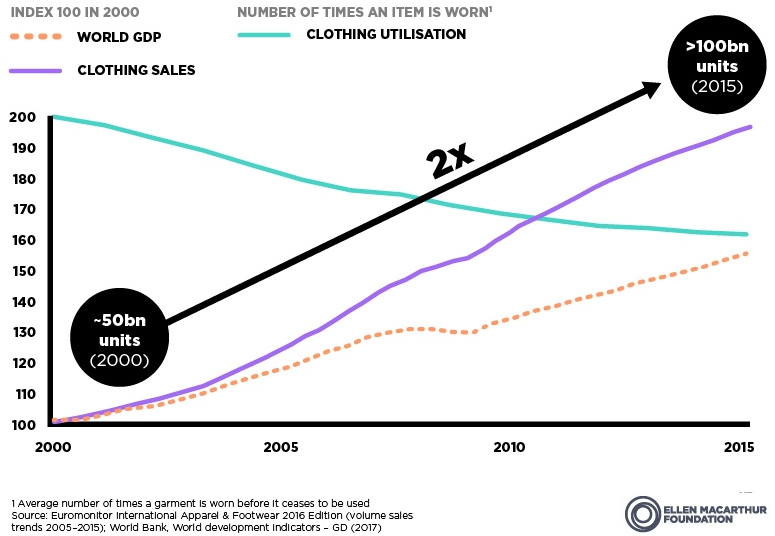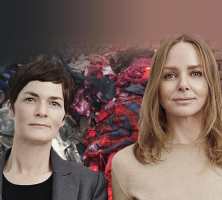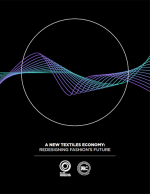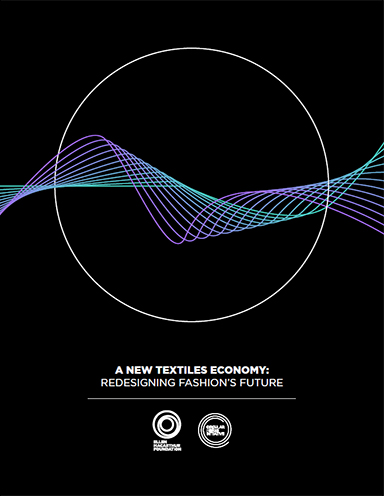A New Textiles Economy: Redesigning Fashion’s Future
This report outlines a vision and sets out ambitions and actions - based on the principles of a circular economy - to design out negative impacts and capture a USD 500 billion economic opportunities by truly transforming the way clothes are designed, sold, and used.
It is hard to imagine living in a world without textiles.
Nearly everyone everywhere comes into contact with them nearly all the time.
This is especially true of clothing, the focus of this report.
Clothes provide comfort and protection, and for many represent an important expression of individuality.
The textiles industry is also a significant sector in the global economy, providing employment for hundreds of millions around the world.
These benefits notwithstanding, the way we design, produce and use clothes has drawbacks that are becoming increasingly clear.
The textiles system operates in an almost completely linear way: large amounts of non-renewable resources are extracted to produce clothes that are often used for only a short time, after which the materials are mostly sent to landfill or incinerated.
More than USD 500 billion of value is lost every year due to clothing underutilization and the lack of recycling. Furthermore, this take-make dispose model has numerous negative environmental and societal impacts.
For instance, total greenhouse gas emissions from textiles production, at 1.2 billion tonnes annually, are more than those of all international flights and maritime shipping combined.
Hazardous substances affect the health of both textile workers and wearers of clothes, and they escape into the environment.
When washed, some garments release plastic microfibres, of which around half a million tonnes every year contribute to ocean pollution – 16 times more than plastic microbeads from cosmetics. Trends point to these negative impacts rising inexorably, with the potential for catastrophic outcomes in future. This linear system is ripe for disruption.
This report outlines a vision for a system that works, delivering long-term benefits – a new textiles economy based on the principles of a circular economy. It offers a direction of travel on which the industry can agree and focus its efforts. In a new textiles economy, clothes, textiles, and fibers are kept at their highest value during use and re-enter the economy afterward, never ending up as waste.
This vision is distinct from, and complements, ongoing efforts to make the textiles system more sustainable by minimising its negative impacts. With specific emphasis on innovation towards a different system, a new textiles economy presents an opportunity to deliver substantially better economic, societal, and environmental outcomes.
Growth of clothing sales and decline in clothing utilization since 2000

What’s Related


Favorites





